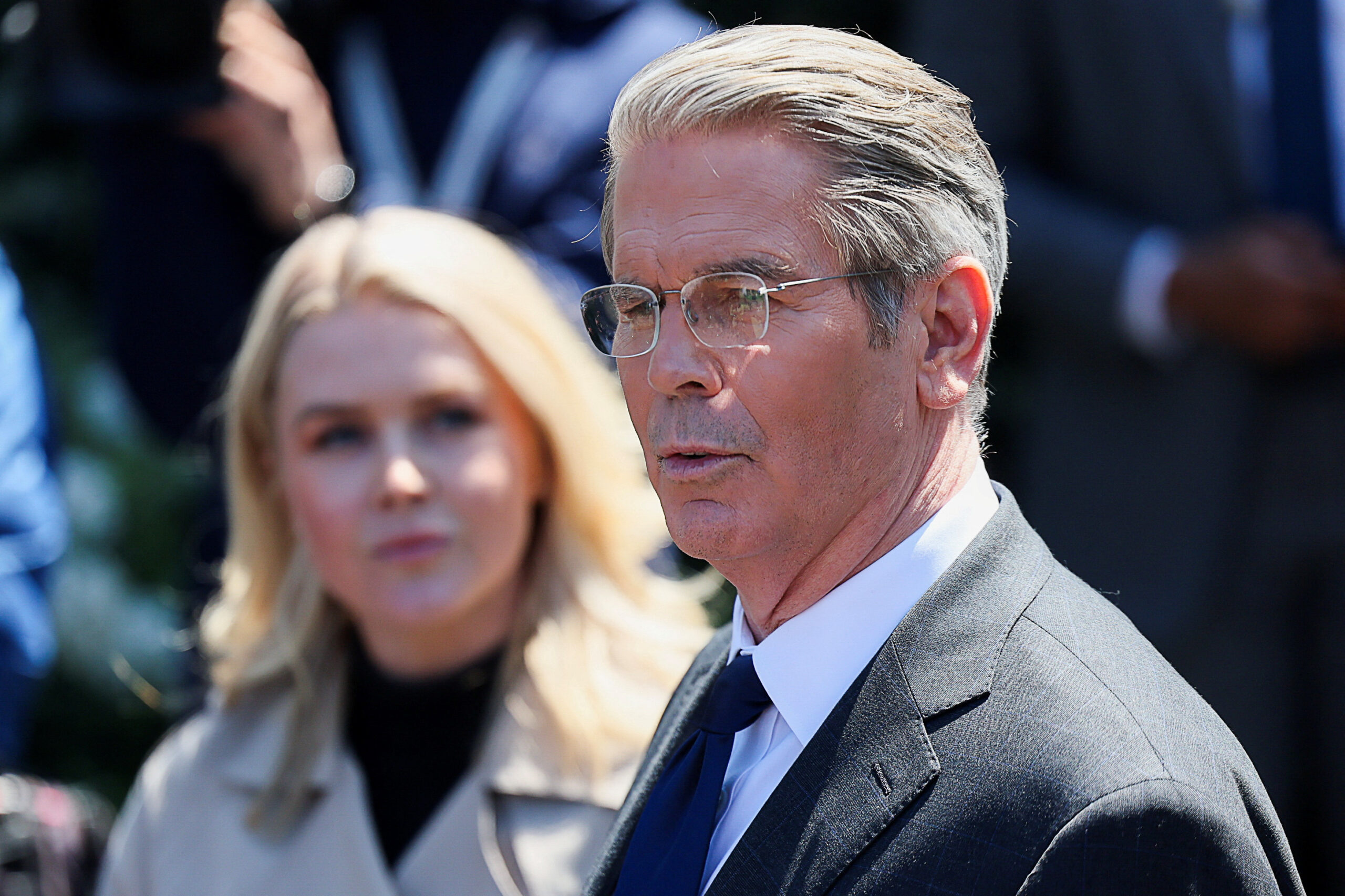U.S. President Donald Trump announced Wednesday a 90-day delay in the implementation of sweeping import tariffs on its main trade partners with the exception of China, whose goods will be subject to an immediate 125% levy.
The stunning reversal was disclosed in a post on Trump’s Truth Social account shortly after he urged investors to “buy” in another post, adding his initials—DJT—which also serve as the code for his publicly traded company, Trump Media & Technology Group Corp.
The White House later clarified that a provisional flat 10% tariff would apply to nearly all countries, including about 60 of the “worst offenders” originally targeted with higher rates.
“I thought that people were jumping a little bit out of line,” Trump briefly told reporters at the White House while hosting a delegation of NASCAR racers. “No other president would have done what I did. No other president,” he said. “And it had to be done.”
The temporary freeze on broader global tariffs follows mounting pressure from U.S. business leaders and investors. Over the past five days, Reuters reported that the S&P 500 shed approximately $5.83 trillion in market value, dragging down major indexes in Europe and Asia as well.
But markets were quick to rally on Trump’s change of mind. At the close, the Dow Jones Industrial Average surged 2,963 points, or 7.87%, while the S&P 500 rose 9.52% and the tech-heavy Nasdaq Composite soared 12.16%. The S&P 500 recorded its best day since October 2008, the Nasdaq its best since January 2001, and the Dow posted its strongest performance in five years. Commodity prices also rebounded, with U.S. WTI crude climbing above $61 per barrel.
Commerce Secretary Howard Lutnick and Treasury Secretary Scott Bessent were believed to be among the high-level officials advocating for a course correction. “Scott Bessent and I sat with the President while he wrote one of the most extraordinary Truth posts of his Presidency. The world is ready to work with President Trump to fix global trade, and China has chosen the opposite direction,” Lutnick said in a post on X.
Speaking at the White House, Bessent explained that the U.S. will pursue individual negotiations with each of its trading partners. “This was his strategy all along,” he said, adding that the President may have deliberately “goaded China into a bad position.”
“President Trump created maximum negotiating leverage for himself,” Bessent said. “We have been overwhelmed by the response from most of our allies who want to come and negotiate in good faith.”
China, however, is seeing no relief. Effective immediately, tariffs on Chinese imports will rise to 125% due to what Trump called “the lack of respect that China has shown to the World’s Markets.” “At some point, hopefully in the near future, China will realize that the days of ripping off the U.S.A., and other countries, is no longer sustainable or acceptable,” he wrote.
The decision marks the latest escalation in a tense trade standoff between the world’s two largest economies. After the U.S. imposed 34% tariffs on Chinese goods last week, Beijing retaliated with symmetrical measures shortly thereafter. On Wednesday, Washington raised its duties by another 50 percentage points, bringing the total to 104%. Hours later, China’s finance ministry hit back with tariffs of up to 84% on all American imports.

Earlier Wednesday, the European Union greenlighted its first list of counter-tariffs on American imports. The measures—approved by 26 of the bloc’s 27 member states, with only Hungary voting against—were set to target U.S. goods worth an estimated €22 billion ($24 billion), over half of which originate from Republican-led states, according to Politico.
The initial wave of EU tariffs, set at 10% and 25%, was scheduled to take effect on April 15, targeting food items such as cranberries and orange juice. The same products were caught in the crossfire during Trump’s first term in 2018, only to be removed under President Joe Biden in 2021.
A second tranche of tariffs, slated for May 16, would impose 25% tariffs on products including steel, beef, white chocolate, and polyethylene. A third round, scheduled for December 1, would extend similar tariffs to almonds and soybeans.
The brunt of the impact would fall on American agriculture, particularly the soybean industry—a key U.S. export to Europe alongside corn and rice. The EU’s list also reportedly includes beef (primarily from Kansas and Nebraska), poultry (Louisiana), auto parts (mostly from Michigan), washing machines (Wisconsin), tobacco (Florida), and everyday consumer goods like coffee, paper tissues (South Carolina), and ice cream (Arizona).
The European Commission decided to exclude bourbon from the list in response to concerns raised by France and Italy, wary of triggering retaliatory U.S. tariffs of up to 200% on European wines and spirits—which constitute a $5 billion market for EU producers.
Brussels, however, stressed that the countermeasures were not irreversible and could “be suspended at any time, should the US agree to a fair and balanced negotiated outcome.” “The EU considers U.S. tariffs unjustified and damaging, causing economic harm to both sides, as well as the global economy,” the bloc’s executive arm added.
Until Wednesday’s announcement, Trump had appeared resistant to compromise with European partners. On the contrary, the U.S. President repeatedly accused Europe of exploiting the U.S. through its trade surplus, and his administration also demanded that Europe boost its purchases of American liquefied natural gas by an eye-popping $350 billion.
“The Europeans are determined to stand their ground, and this shows that unity works,” said Friedrich Merz, Germany’s chancellor-in-waiting, during an appearance on RTL Direkt shortly after Trump’s remarks. “Let’s all agree to zero tariffs on transatlantic trade, and the problem will be solved,” added Merz, who on Wednesday signed a coalition agreement with the Social Democratic Party (SPD).












